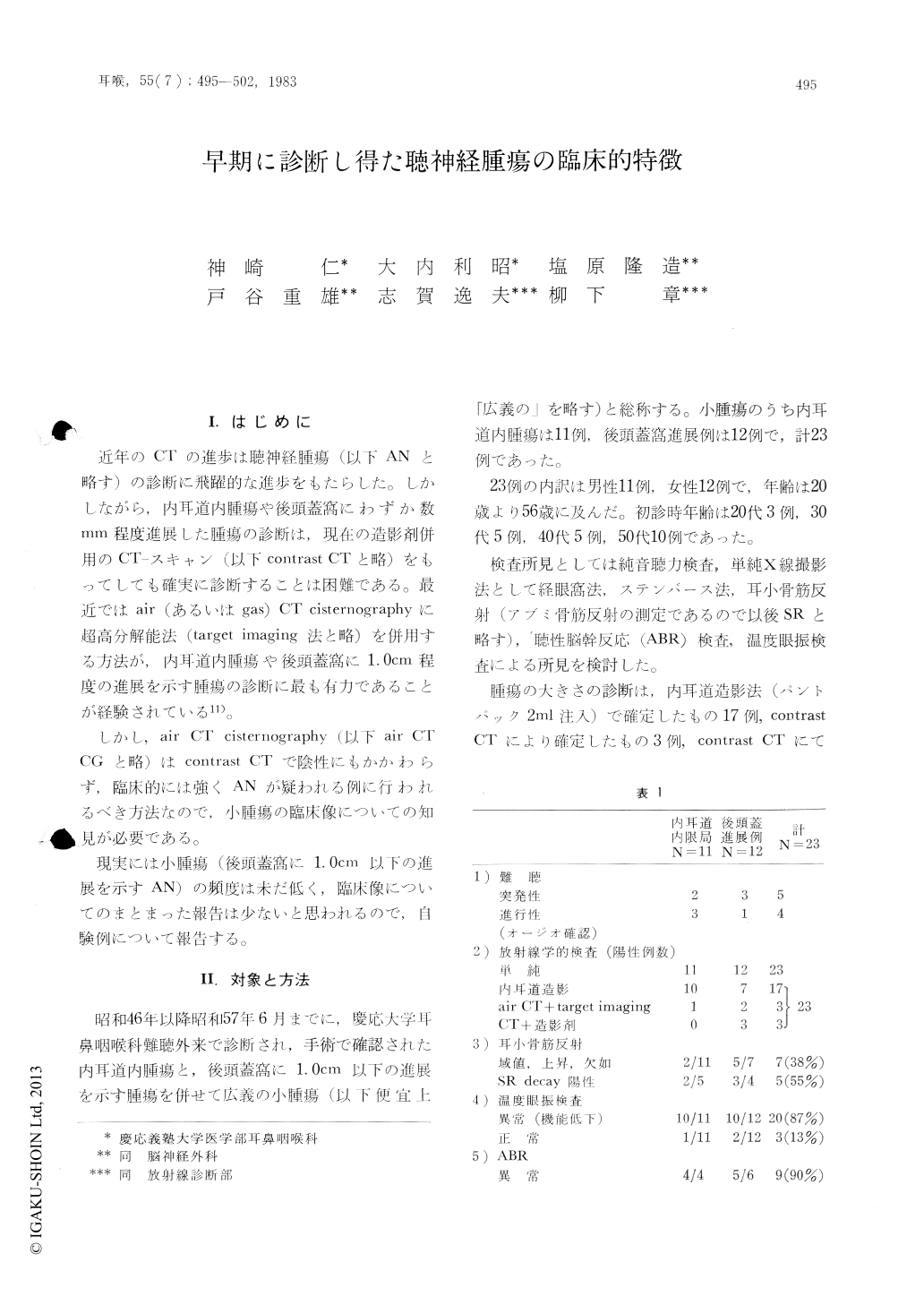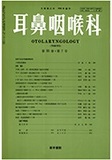Japanese
English
- 有料閲覧
- Abstract 文献概要
- 1ページ目 Look Inside
I.はじめに
近年のCTの進歩は聴神経腫瘍(以下ANと略す)の診断に飛躍的な進歩をもたらした。しかしながら,内耳道内腫瘍や後頭蓋窩にわずか数mm程度進展した腫瘍の診断は,現在の造影剤併用のCT-スキャン(以下contrastCTと略)をもってしても確実に診断することは困難である。最近ではair(あるいはgas)CT cisternographyに超高分解能法(target imaging法と略)を併用する方法が,内耳道内腫瘍や後頭蓋窩に1.0cm程度の進展を示す腫瘍の診断に最も有力であることが経験されている11)。
しかし,air CT cisternography(以下air CTCGと略)はcontrast CTで陰性にもかかわらず,臨床的には強くANが疑われる例に行われるべき方法なので,小腫瘍の臨床像についての知見が必要である。
1) Clinical observations were carried out on 23 cases including 11 with tumors within the internal auditory meatus, and 12 showing extrusion of less than 1.0 cm into the posterior fossa.
2) The incidence of small tumors was approximately 30% in this series.
3) Sudden deafness was the initial manifestation of the disease in 5 cases, while in 4 cases, deafness was either suddenly or rapidly progressive.
4) Abnormal findings of the internal auditory meatus were observed on plain X-ray films of all patients.
5) The stapedius reflex test was abnormal only in 38%, of the cases. Therefore, the stapedius reflex test and decay test were thought to be supplementary methods for diagnosis.
6) In ABR, abnormalities were observed in 90%.
7) In caloric test, the decreased responses of the diseased side was observed in 87%, but there were no cases which showed absence of caloric response to cold water irrigation.
8) In the diagnosis of tumors smaller than 7 mm in size, and tumors within the internal auditory meatus, the combined method of air CT cisternography with the target imaging method is presently the most useful.

Copyright © 1983, Igaku-Shoin Ltd. All rights reserved.


